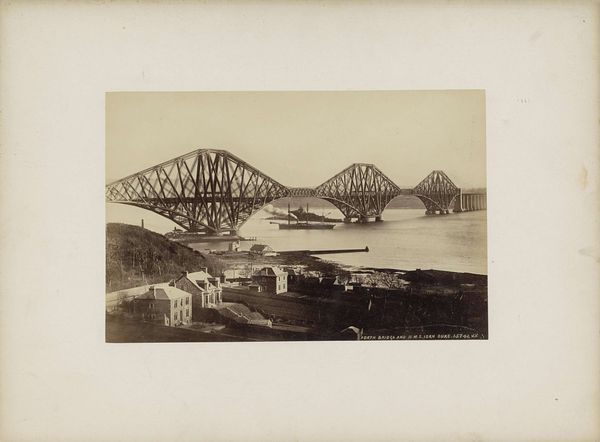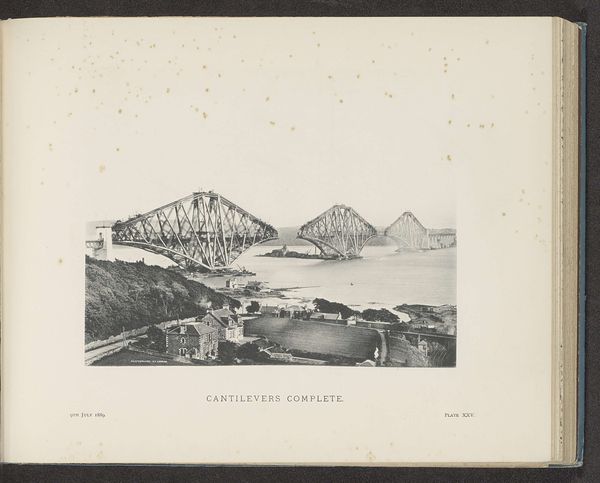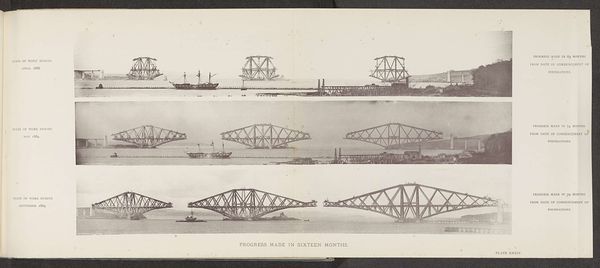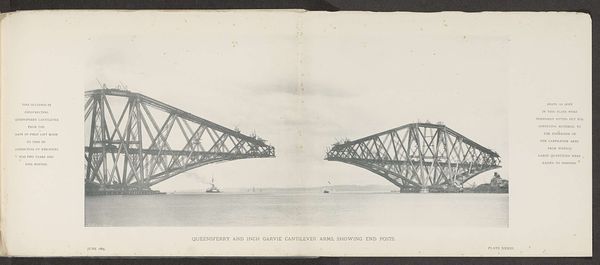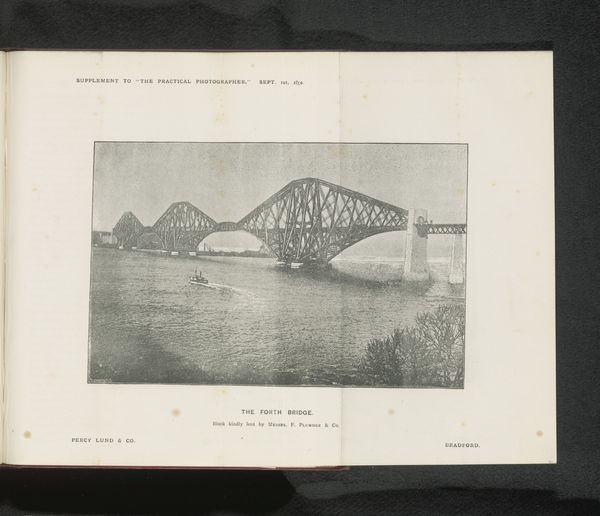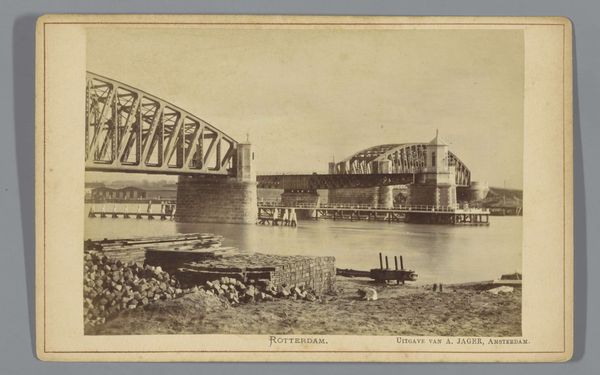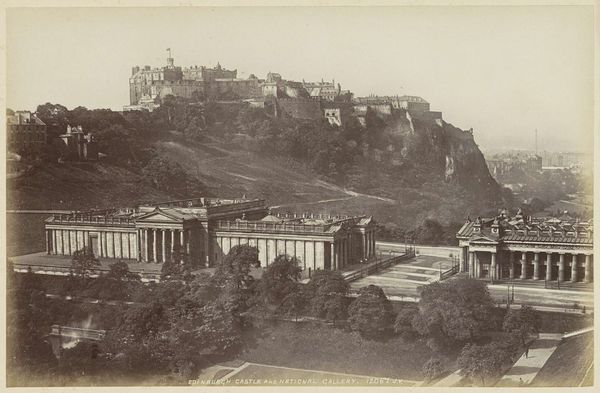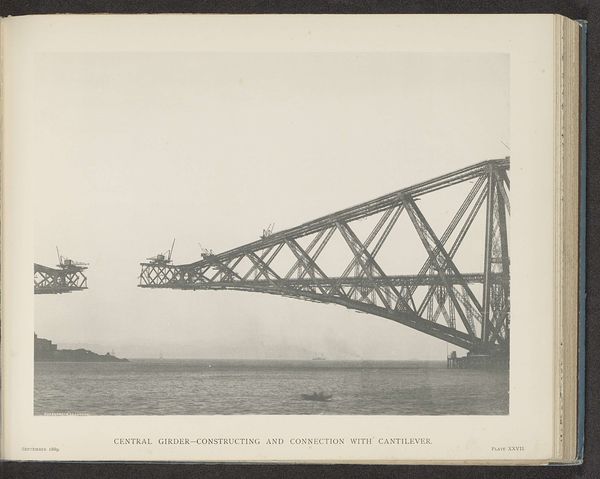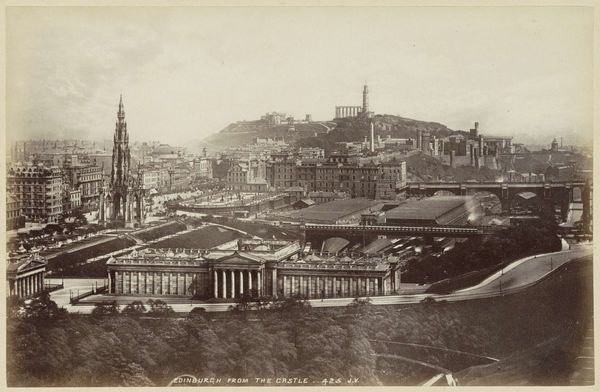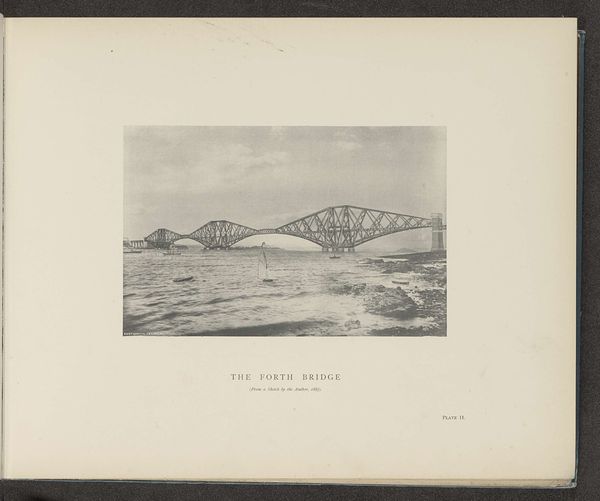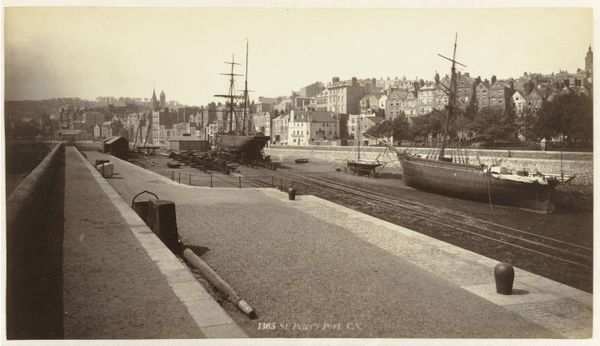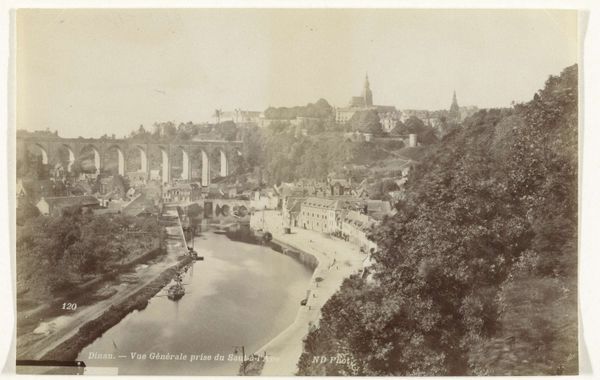
Gezicht op de Forth Bridge over de Firth of Forth in Schotland c. 1870 - 1890
0:00
0:00
print, photography, gelatin-silver-print
#
pictorialism
# print
#
landscape
#
photography
#
orientalism
#
gelatin-silver-print
#
cityscape
#
realism
Dimensions: height 131 mm, width 205 mm
Copyright: Rijks Museum: Open Domain
Curator: From our collection here at the Rijksmuseum, we have "Gezicht op de Forth Bridge over de Firth of Forth in Schotland," a gelatin-silver print created by James Valentine between 1870 and 1890. The title translates to "View of the Forth Bridge over the Firth of Forth in Scotland". Editor: Wow, what a shot. It looks sepia-toned and immediately gives me a feeling of industrial progress viewed through the lens of a quickly fading era, like a chapter closing as the machine age roars in. The composition, looking at that grand, lacy ironwork against those sleepy stone houses... haunting. Curator: It certainly encapsulates a moment of profound transition. Valentine was working within an era of significant imperial expansion and rapid industrial development in Britain. This bridge became an important symbol of modernity and British engineering prowess. Looking closer, we also see evidence of Pictorialism, that is, using photography less for objective representation and more for artistic effect, with composition and tonality manipulated to convey a specific mood. Editor: You can almost smell the coal smoke and salt air, can’t you? Pictorialism suits the subject; it's softened, not quite hyper-realistic which means we don't dwell on the ugliness of production and labor as much as on what industrial advances offer. Also notice how Valentine’s use of light sort of romanticizes it all, this almost dream-like state despite its monumental scale... I wonder about his intentions. Curator: It raises a number of complex issues, right? Is Valentine celebrating or merely documenting? How are notions of British identity and dominance encoded in this portrayal? Pictorialism adds to the conversation because it can veil social realities while framing technology in this grand landscape as somehow beautiful. Considering debates around Scottish autonomy and industrial impact, the bridge here is a strong reminder of centralized power dynamics within the United Kingdom. Editor: I see your point. Now I can’t help thinking about whose perspectives aren't being highlighted here and whose labor and sacrifice really built that colossal bridge… Perhaps its scale romanticizes technological accomplishment by silencing social and human factors involved in such an ambitious industrial project. On a less somber note, I just love how these weighty gray tones create almost another character on its own. It looks timeless! Curator: I find myself questioning that timelessness, however. While superficially beautiful, photographs like this acted as powerful tools for constructing perceptions. The very act of framing and presenting a landscape—in this case a constructed, industrialized landscape—promotes specific ideological perspectives, influencing its contemporary audiences as well as our present day readings. Editor: Okay, valid! Well, even knowing all of this new socio-historical stuff does not detract from my initial experience, but it layers and enriches it to another plane… Thanks, I guess? Curator: Always! Hopefully our conversation shed light on photography’s incredible ability to freeze historical narratives. These dialogues are pivotal, urging critical evaluations beyond first impressions alone.
Comments
No comments
Be the first to comment and join the conversation on the ultimate creative platform.
